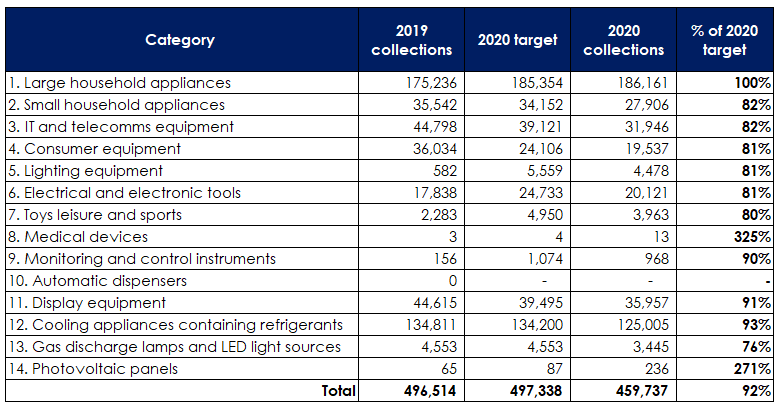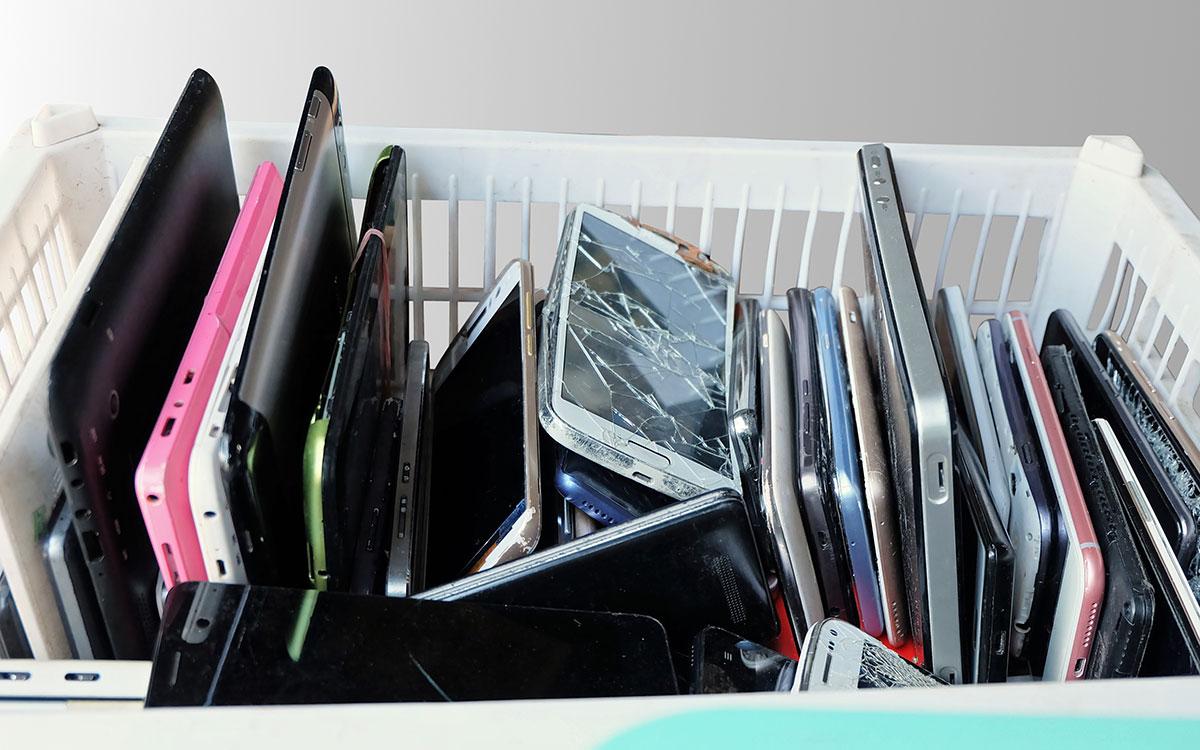Earlier this month the total WEEE collection results for 2020 were published by the Environment Agency, confirming that the overall target has been missed by 8%. A total of 459,737 tonnes were collected, just over 29% of the total placed on market figures.
The data in the table below illustrates that the total tonnage collected last year was less than the amount collected in 2019 by 37,000. Clearly this drop is due to COVID-19 and the restrictions placed on society, including the closure of household waste sites. There were three categories where the target was exceeded however, including large household appliances, photovoltaic panel and medical devices.

Many producer compliance schemes will now be reliant on the compliance fee due the lack of available WEEE recycling evidence to fulfil their obligations.
Although there were increased collections in the third quarter of last year, the data shows it was insufficient to make up for the drop in collections caused by the national lockdowns earlier in the year, not to mention the further restrictions before Christmas which meant the target was very unlikely to be hit.
Phil Conran, chair of the AATF Forum which is an organisation representing 85% WEEE treatment stakeholders, has stated “2020 saw a 10% jump in EEE placed on the market and whilst recognising the likely difficulties that will persist with HWRC collection volumes for some of this year, we believe there are significant amounts of WEEE that householders have been holding onto until HWRCs are fully open. We therefore expect a surge in volumes later in the year and believe it is right to maintain the pressure on collections”.
Robbie Staniforth, Head of policy at B2B Compliance, commented “The figures accurately reflect the difficulties experienced as a consequence of lockdown. Unfortunately, due to the way the system is designed, the targets set by Government on an annual basis do not set a trajectory for improving outcomes for electrical items.”
“It is being inferred that people are hoarding waste at home, rather than alternatives, like making items last longer or passing down to other family members. This highlights just how poor the data is. The annual cycle of setting and missing targets needs to be broken by significant improvements to the legislation. We look forward to consultations that will address these issues and many more later this year.”
If you have any questions about the latest WEEE collection results, please contact our team.


